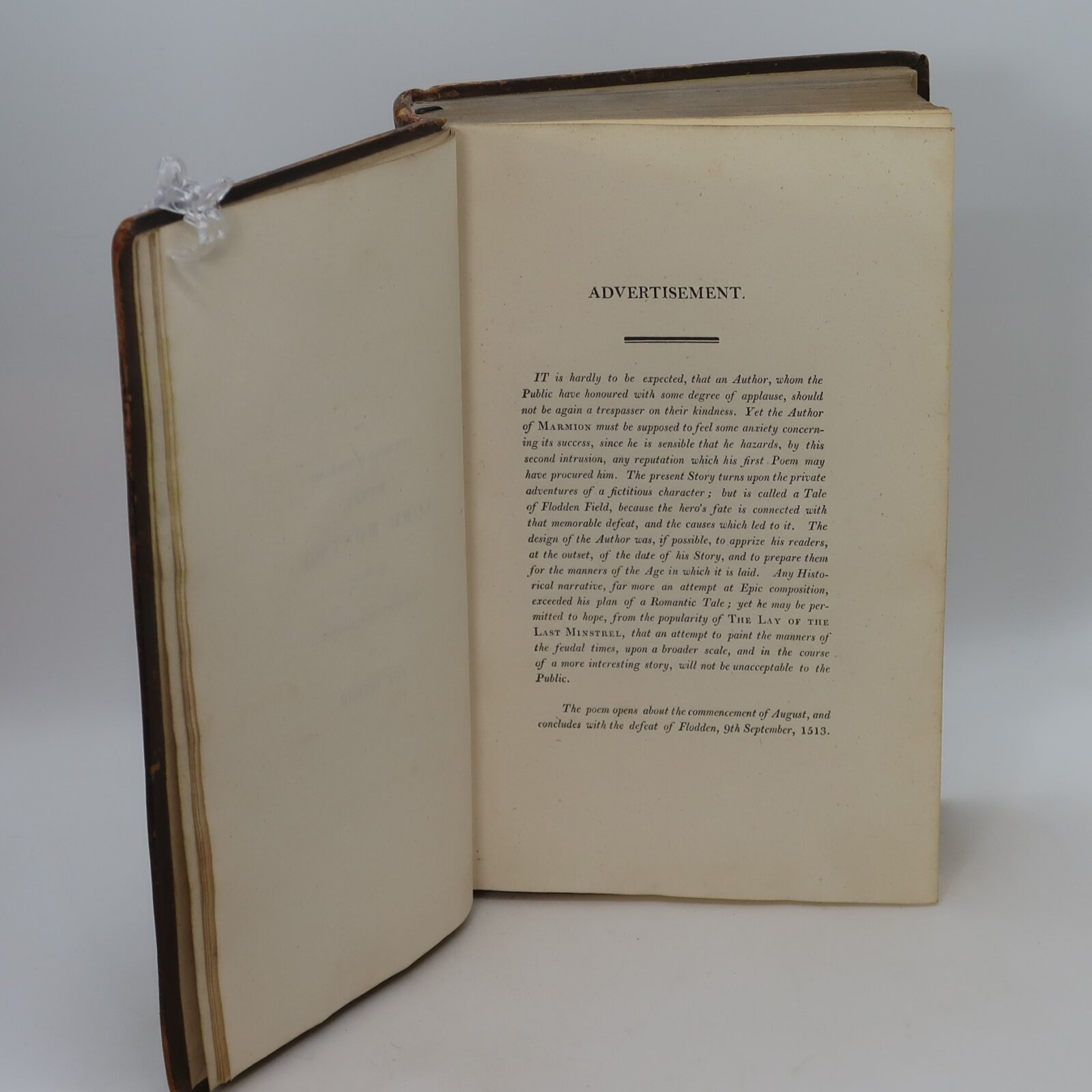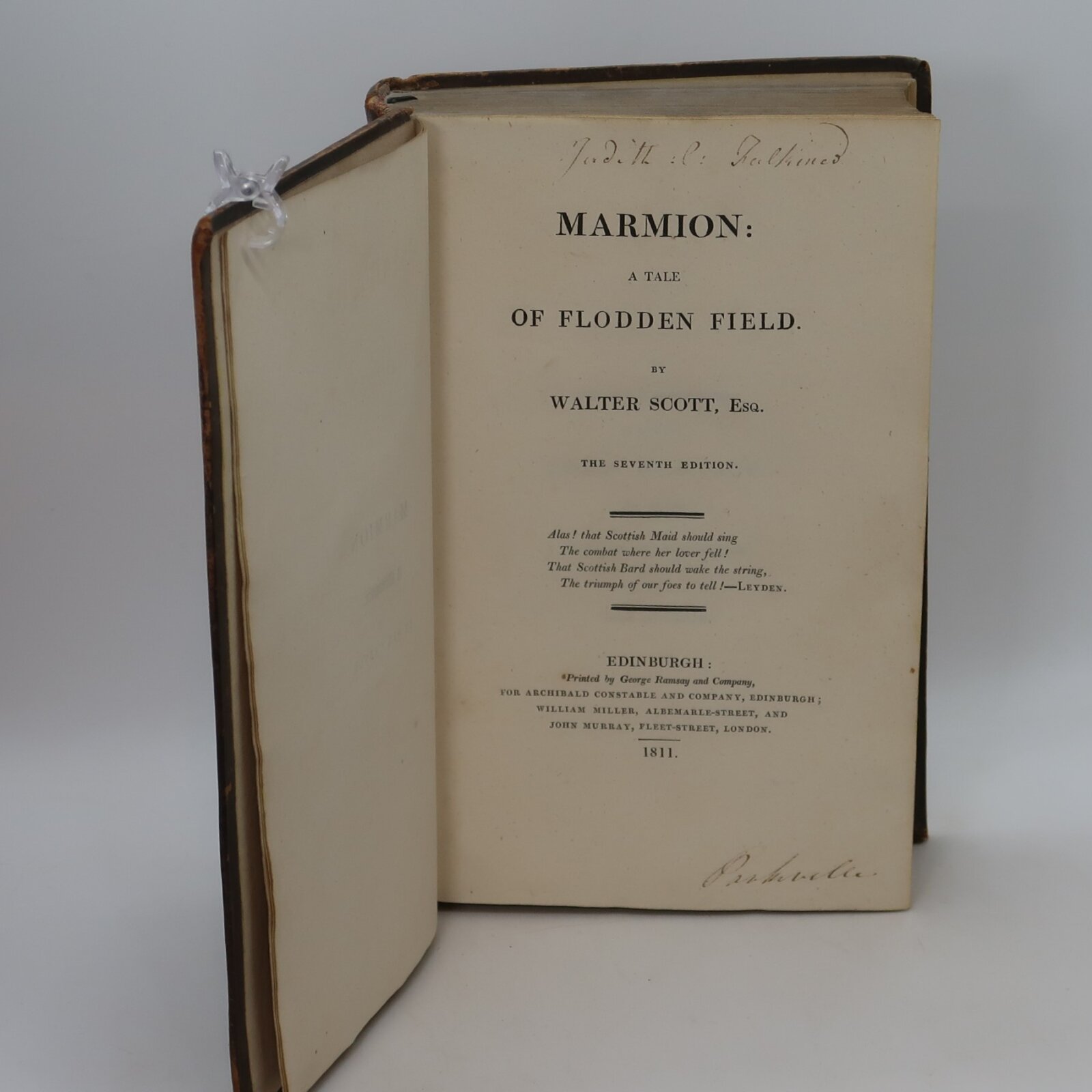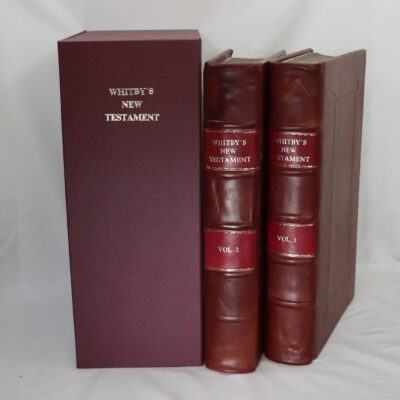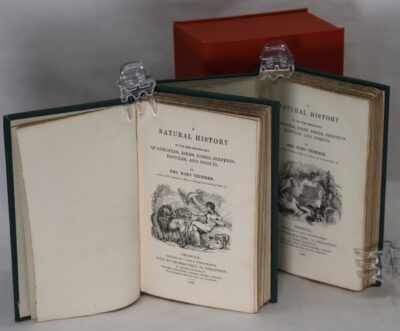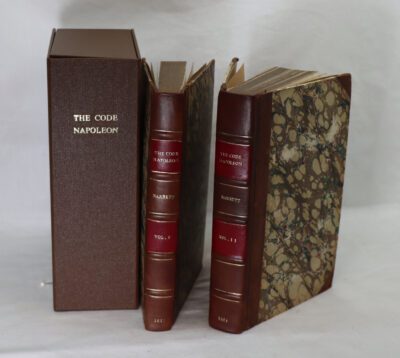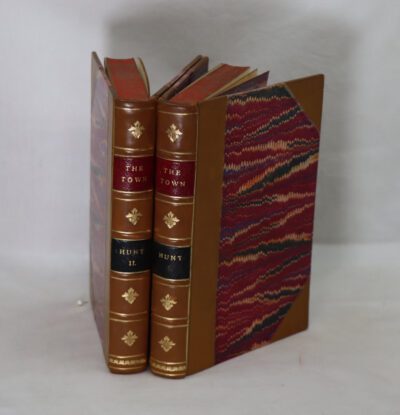Marmion.
By Walter Scott
Printed: 1811
Publisher: Archibald Constable & Co. Edinburgh
Edition: seventh edition
| Dimensions | 15 × 22 × 4 cm |
|---|---|
| Language |
Language: English
Size (cminches): 15 x 22 x 4
Condition: Fine (See explanation of ratings)
Item information
Description
Leather spine and boards with black name plate and gilt tooling.
A nice early copy – Printed 1811
It has a nice forward or Advertisement by Scott
The poem concerns the designs of Lord Marmion, a favourite of Henry VIII, upon a wealthy heiress, Clara de Clare. In order to remove her fiancé, Sir Ralph De Wilton, he forges a letter implicating him in a treasonable plot. In this, he is assisted by his mistress, Constance De Beverley, a perjured nun, who thus hopes to reconquer his affection. De Wilton claims the right to defend his honour in combat but is defeated by Marmion and forced to flee abroad. In order to escape Marmion, Clara takes refuge in a convent. Marmion abandons Constance who is condemned to death for breaking her vows and walled up alive in the convent of St. Hilda on the Holy Island at Lindisfarne. Before her death, she consigns to the Abbess documents proving De Wilton’s innocence. De Wilton, meanwhile, has re-entered the country disguised as a pilgrim. He follows Marmion to Scotland where he has gone to make overtures for peace at the Scottish court (and to assess the Scots’ battle-readiness). The Abbess finds De Wilton in Edinburgh and hands over the documents. De Wilton shows these to Marmion’s host, the Earl of Angus, who equips him with armour and readmits him to the order of knighthood. The battle of Flodden Field is fought before De Wilton can proceed further against Marmion. Marmion is killed in the battle. De Wilton fights with distinction, regains his honour and estates, and marries Clara.
Marmion was an even greater commercial success than The Lay of the Last Minstrel The first (exorbitantly priced) edition of 2,000 copies sold out in under two months, and by the end of May 1808 the poem was already into its third edition. Frequently reprinted, Marmion remained a best-seller throughout the nineteenth century.
Critical response, however, was a good deal cooler. There was widespread censure of the opening epistles, which were felt to intrude upon the narrative. The plot was judged obscure and, in these pre-Byronic days, the character of Marmion, a mixture of villainy and magnanimity, was felt to be unsuitable for a poetic hero. A particularly pointed critique was offered by Francis Jeffrey in the Edinburgh Review. For Jeffrey, there was too much in he poem that was ‘flat and tedious’ where Scott appeared merely to be vaunting his historical knowledge. He objected to the anachronistic vogue for chivalry that Scott had fostered and, as an advocate of peace with France, bridled at the bellicose sentiments of the introductory epistles. None of this, however, hindered Scott’s mounting vogue. This had now reached such a height that Constable was able to commission a portrait of the poet from the celebrated painter Sir Henry Raeburn.
Sir Walter Scott, 1st Baronet FRSE FSA.Scot (15 August 1771 – 21 September 1832), was a Scottish historical novelist, poet, playwright and historian. Many works remain classics of European and Scottish literature, notably the novels Ivanhoe, Rob Roy, Waverley, Old Mortality, The Heart of Mid-Lothian and The Bride of Lammermoor, and the narrative poems The Lady of the Lake and Marmion. He had a major impact on European and American literature. As an advocate, judge and legal administrator by profession, he combined writing and editing with daily work as Clerk of Session and Sheriff-Depute of Selkirkshire. He was prominent in Edinburgh’s Tory establishment, active in the Highland Society, long a president of the Royal Society of Edinburgh (1820–1832), and a vice president of the Society of Antiquaries of Scotland (1827–1829).] His knowledge of history and literary facility equipped him to establish the historical novel genre and as an exemplar of European Romanticism. He became a baronet “of Abbotsford in the County of Roxburgh”, Scotland, on 22 April 1820; the title became extinct on his son’s death in 1847
Want to know more about this item?
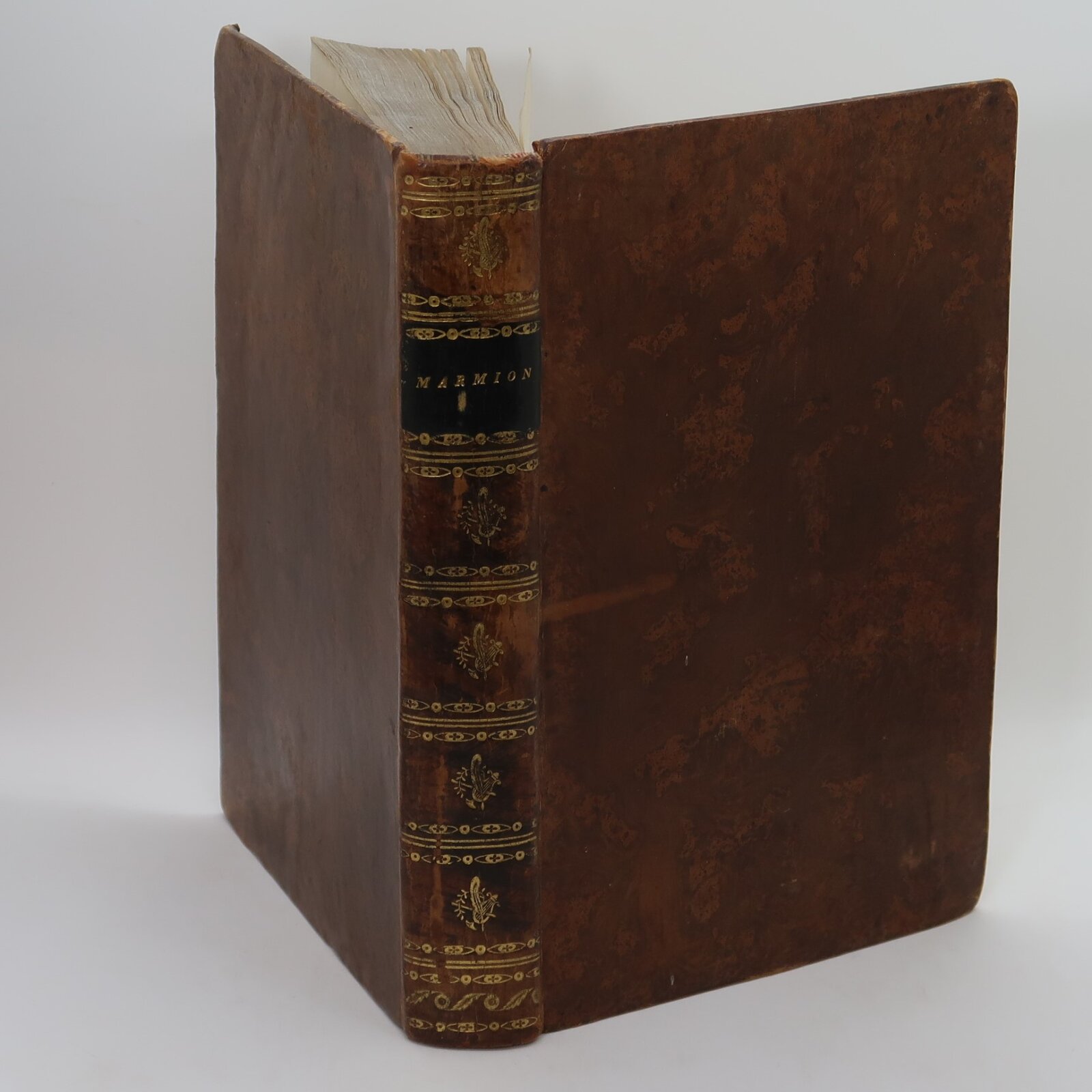
Related products
Share this Page with a friend

